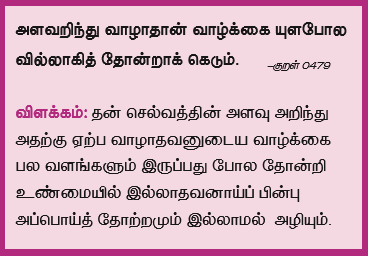Economics – An Introduction Notes 6th Social Science
Economics – An Introduction Notes 6th Social Science
6th Social Science Lesson 15 Notes in English
15. Economics – An Introduction
1. What was the main occupation of the Villages?
Farming is the main occupation in villages.
2. What do the farmers do?
The farmers grow various crops like pulses, grains, vegetables etc., and send them to the shops in cities. We buy and consume them.
3. What is called Sandhai?
In villages, once in a week or month, all things are sold in a particular place at a specific time to meet the needs of the people. That is called ˋSandhaiˊ.
4. What activities are carried out in a sandhai?
Buying and selling activities are carried out in a sandhai.
5. What are Consumer Goods?
The finished goods which are bought from the market to fullfill the daily needs of the consumers is called consumer goods. Example: rice, clothes, bicycles, etc.
6th Social Book Back Questions
6. What is Barter System?
In olden days we had a system of exchanging goods for other goods, called barter system. For example, exchange a bag of rice for enough clothes.
7. How did Money came into being?
When they exchange commodities, they may lead to certain problems, when comparing the differences in the value of commodity. To solve this problem, people invented a tool called money.
8. What is called Savings?
The amount from the income which is left for future needs after consumption is called savings.
9. What are Villages?
The early man, who hunted and gathered food, later learnt to cultivate crops. When they found rivers which provided them water, settled down permanently near the rivers. These permanent settlements were called villages.
10. Who are Cultivators?
Agriculture remains to be the root of our economy even today. Man has no limits for his demand and desire. Based on this, man started to learn new occupations. Those who are involved in farming and grazing are called farmers or cultivators”.
11. Is agriculture the primary occupation?
Yes, there are certain other primary activities like farming.
12. Explain our Economic System:
Agriculture and industries are helpful in the economic development of our country. Our country’s economy is based on three economic activities.
13. What are Primary Activities?
They are concerned with the production of raw materials for food stuff and industrial use. Primary activities include
- Agriculture
- Cattle rearing
- Fishing
- Mining
- Collection of fruits, nuts, honey, rubber, resin and medicinal herbs
- lumbering
14. Illustrate Gandhiji Thought on Villages:
Gandhiji has said that the villages are the backbone of our country.
15. Explain the Population in Cities?
More than 50 percentage of the world’s populations live in cities. In our state Tamil Nadu, 47 percentage of the people are in cities.
16. What are city Centered Activities?
Tamil Nadu is well developed in secondary and tertiary activities as well. These are city centered activities.
17. What are Secondary Activities?
The raw materials obtained from the primary activities are converted into finished products through machinery on a large scale. These activities are called secondary activities.
- Industries are classified on the basis of the availability of raw materials, capital and ownership. On the basis of raw materials, industries are classified as
- Agro based industries – Cotton textiles, Sugar mills and Food processing.
- Forest based industries – Paper mills, Furniture making, Building Materials.
- Mineral based industries – Cement, Iron, Aluminium Industries.
- Marine based industries – Sea food processing
18. What are Tertiary Activities?
The industries produce goods and distribute them to the people. For this purpose, some services are required. These services are called tertiary activities or service sectors. The service sector serves the people to fulfill their daily needs like: Transport – roadways, railways, waterways, airways.
- Communication – Post, Telephone, Information Technology etc
- Trade – Procurement of goods, selling
- Banking – Money transactions, banking services.
19. Thirukural:
